100th Anniversary Great Nave Tour at the Cathedral of St. John the Divine
Celebrate the 1925 construction of the stunning nave inside the world's largest Gothic cathedral!


Untapped New York’s subway-art series ends with an appropriate grand finale: an exploration of the Arts for Transit installations in the heart of the city, following the 7 train, which cuts through the center of Manhattan and extend to the reaches of the most diverse neighborhood in the nation.
Way out in Queens, at the Flushing — Main Street station, Ik-Joong Kang referenced the neighborhood’s diversity and vivacity with Happy World (1999). The over 2,000 ceramic tiles at the eastern entrance to the trains are based on canvas works that Kang created as a way to capture the scenes of life he encountered on the subway. The tiles are not illustrations but symbols and signs, creating a pictorial language out of idiosyncratic snapshots, some universal, some “Only in New York.”
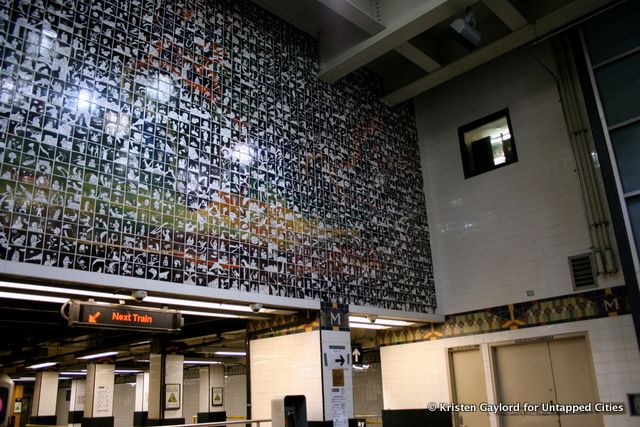
Ik-Joong Kant, Happy World, 1999.
Several stops southwest at Woodside — 61st Street, I found Dimitri Gerakaris’s Woodside Continuum (1999). Here the artist shaped the metal bars of the “control area” to reflect the Woodside neighborhood and its historic relationship with public transportation, creating sightlines that reach from the viewer to the station to the community around it.
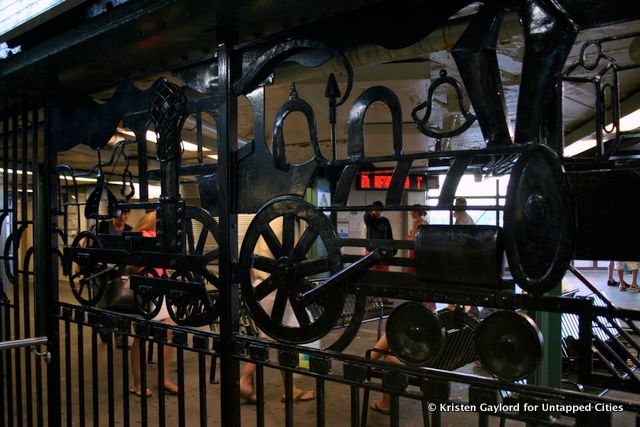
Dimitri Gerakaris, Woodside Continuum, 1999.
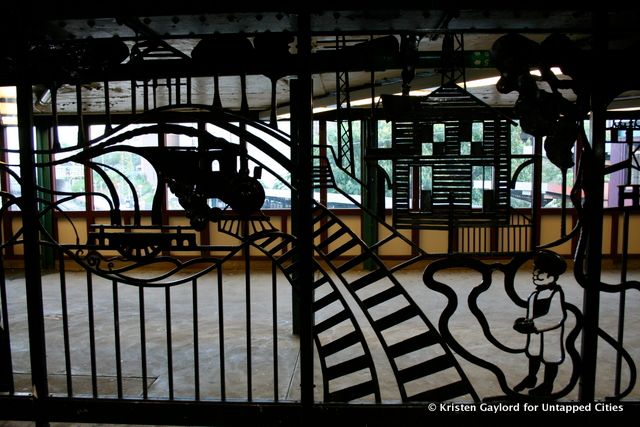
Dimitri Gerakaris, Woodside Continuum, 1999.
Along the “home stretch,” as it were, lie three major New York subway stations, including 42nd Street – Grand Central. Although the terminal above is one of the most photographed and iconic sites in NYC, there is art underground, as well. Dan Sinclair created two assemblages called Fast Track and Speedwheels (1990), emphasizing the hustle and bustle of this transportation center as well as the mechanics of the trains. The shapes are familiar–futuristic yet retro, a combination of art deco and steam punk–and mimic the grinding gears only yards away that keep this city’s 8 million people moving.
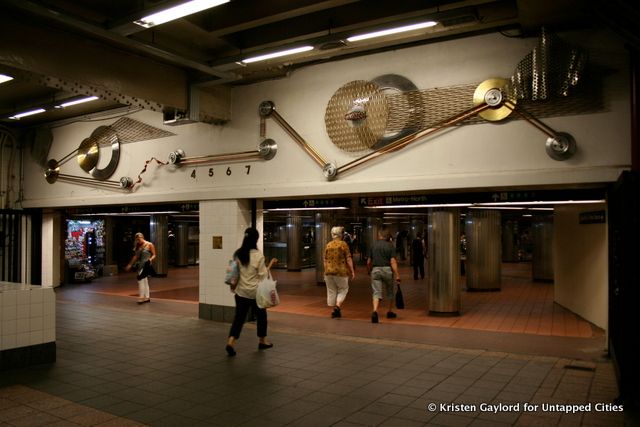
Dan Sinclair, Fast Track and Speedwheels, 1990.
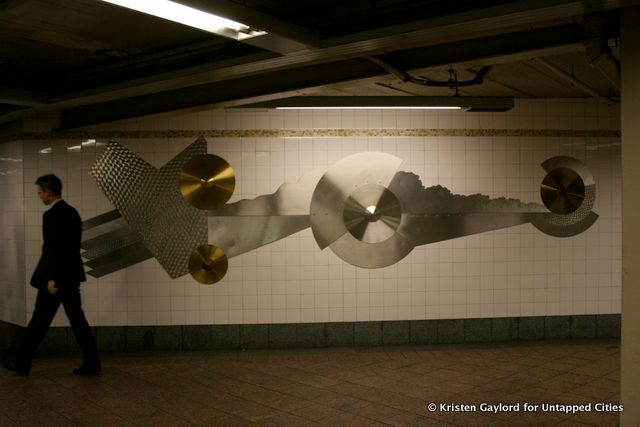
Dan Sinclair, Fast Track and Speedwheels, 1990.
Just a few avenues over, 42nd Street — Bryant Park is home to one of the most beloved Arts for Transit installations, based on this author’s scientifically rigorous inspection of Tumblr photographs. Samm Kunce’s Under Bryant Park (2002) is an expanded mosaic that, as one of the system’s largest works, escorts commuters on their transfer between the 7 and the B/D/F/M lines. The walls are patterned to mimic the underground of the city: pipes, roots, dirt. Woven throughout are quotes from Carl Jung, Mother Goose, James Joyce’s Finnegans Wake, and Ovid.
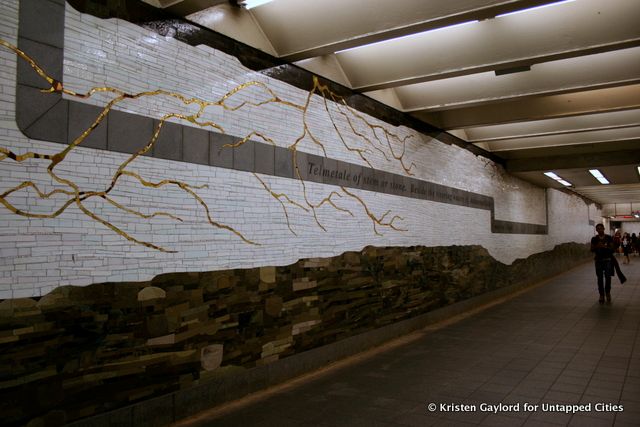
Samm Kunce, Under Bryant Park, 2002.
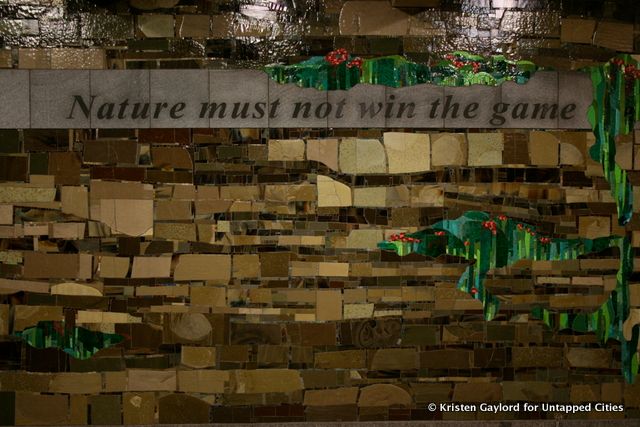
Samm Kunce, Under Bryant Park, 2002.
Then, the station residents love to hate: Times Square — 42nd Street. This station is filled with artwork: pieces by five artists, more than any other station. Tucked away by the 41st Street exit is Jack Beal’s The Return of Spring / The Onset of Winter (2001/2005). The artist has said that the mural is a modern take on the classical myth of Persephone, who had to live part of every year underground with her abductor/husband, Pluto/Hades. Her mother Demeter, goddess of the harvest spent those months in despair and seclusion, affecting the agricultural seasons. That context makes the mosaics richer; initially, I had just been tickled by the unusually interested facial expressions of the New Yorkers as they watched the film shoot, since I’ve only witnessed a range of emotions along the tight spectrum from “Annoyed” to “Livid.”
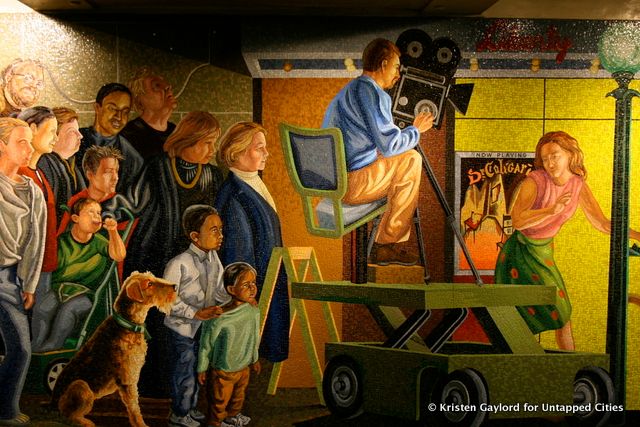
Jack Beal, The Return of Spring / The Onset of Winter, 2001/2005.
Another figurative mosaic in the station is New York in Transit (2001) by Jacob Lawrence. The twentieth-century African American painter’s style is instantly recognizable: the flattened, graphic shapes; the vivid, fully-saturated colors; the layered yet shallow representation of space. The artist’s last public work, the mosaic represents the similarly layered life of the city””its simultaneity and convergence with gestures and overlap and noise.
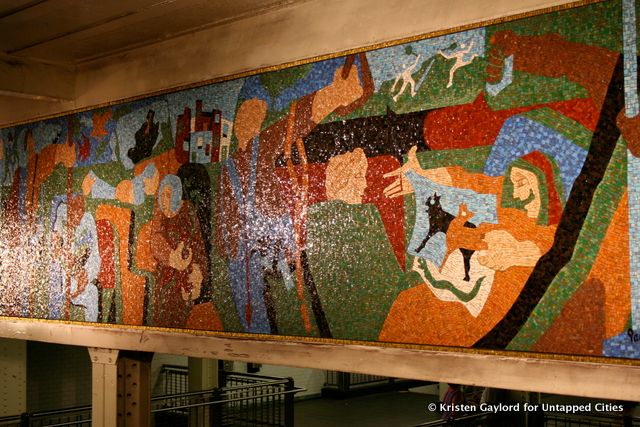
Jacob Lawrence, New York in Transit, 2001.
Not very far away is another famous twentieth-century painter’s contribution: Times Square Mural (2002, collage 1990) by Roy Lichtenstein. With one of the most recognized (and replicated, and parodied) art vocabularies in the world, Lichtenstein is considered a standard of art history, specifically of American and Pop art. For Times Square station he conceived of a celebratory collage featuring images of subway tiles, cityscapes, and a futuristic train. In the city’s most famous space he motioned to its specificity, with a giant “42” in the style of subway mosaic design, and its collective urbanity, with a vision of the future city.
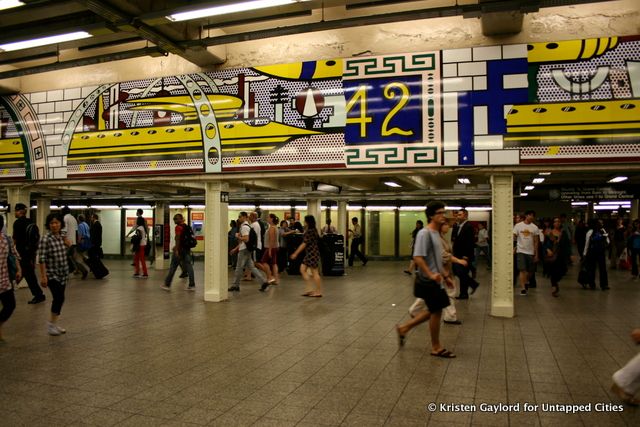
Roy Lichtenstein, Times Square Mural, 2002 (collage 1990).
I’ve never been sure why Jane Dickson’s The Revelers (2008) is one of my favorite pieces, but ever since I had to take a weekly bus from Port Authority Bus Terminal and walked the hallways from 42nd Street subways to PABT, I’ve enjoyed it. The work isn’t groundbreaking””it consists of multiple mosaic figures, meant to represent New Year’s Eve revelry. And Times Square on New Year’s Eve is one New York tradition I intend never to experience. I think it’s the scale of the figures””who dance and hug at roughly a rushing commuter’s size””and their spaced out placement that make them so delightful to me: playful and unexpected.
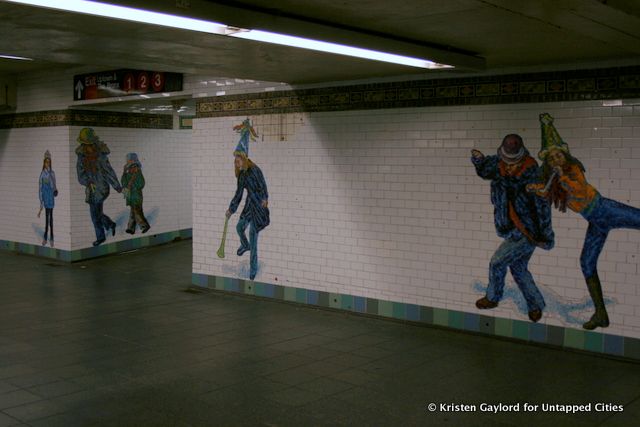
Jane Dickson, The Revelers, 2008.
But also, it’s what New Year’s Eve means to this city. It’s is only one day a year, but it’s important enough for us to acknowledge the other 364 days in public and in stone. And why do we have such a celebration over the passage of time? Waxing a little sentimental, I think it’s because New York never grows tired of looking forward. Every time a new year begins we invite people from all over the world to a big party””we kiss, we drink, we dance in celebration of the clock moving forward. I don’t ever want to go to that particular party, for the reasons most people who live here gripe about, but I’m not going to pretend that I don’t love living in the city that throws it.
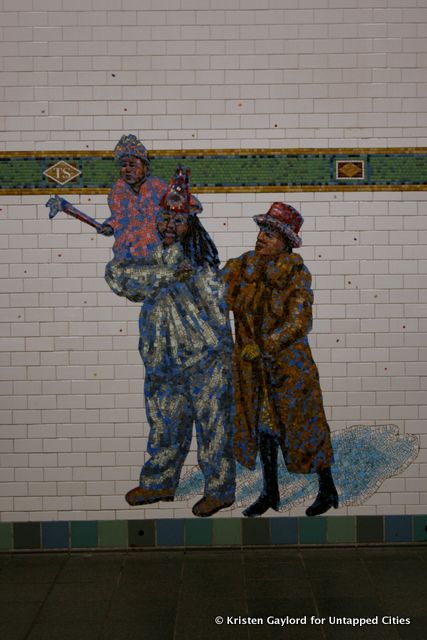
Jane Dickson, The Revelers, 2008.
Get in touch with the author at @kaygegay.
Subscribe to our newsletter